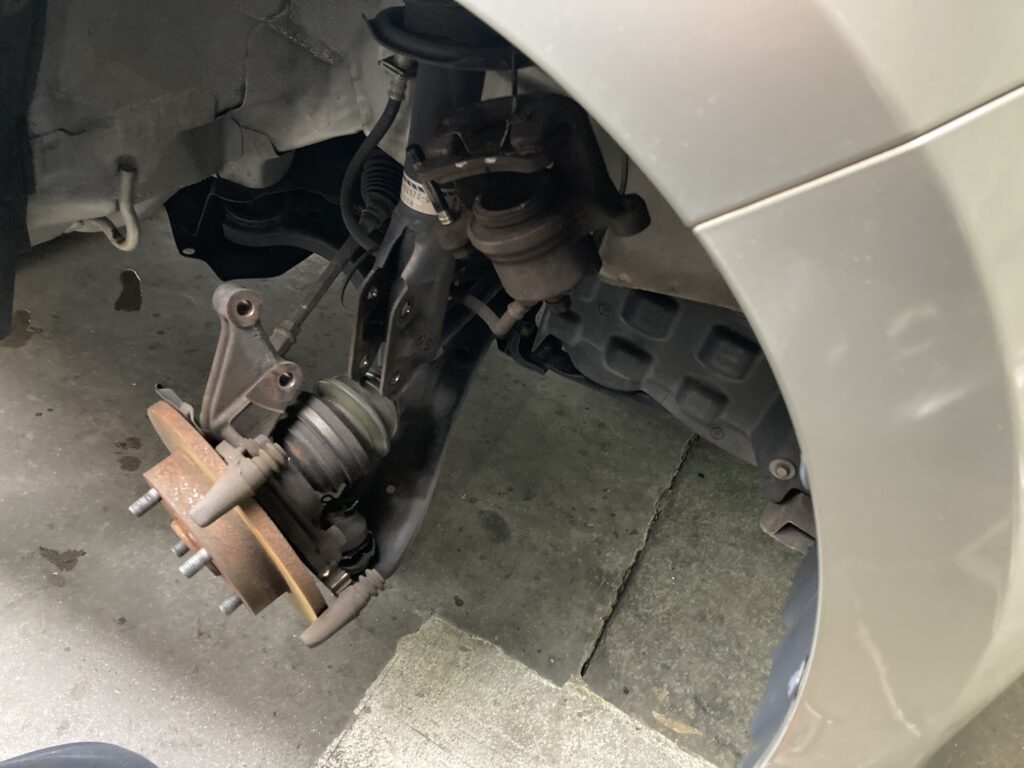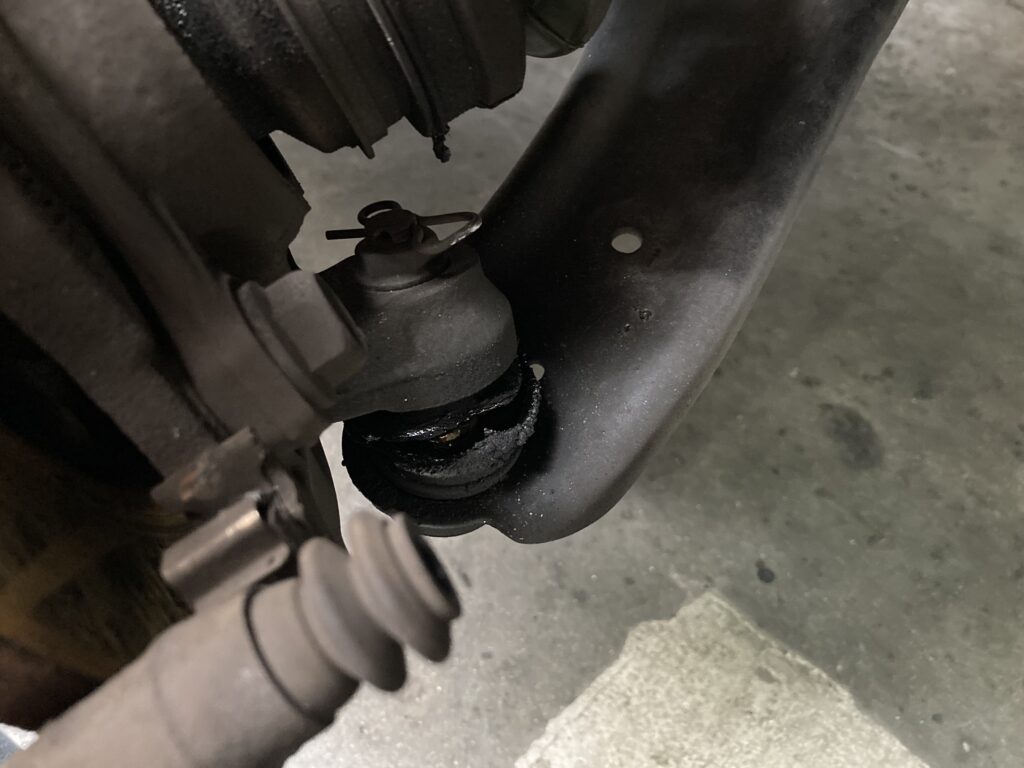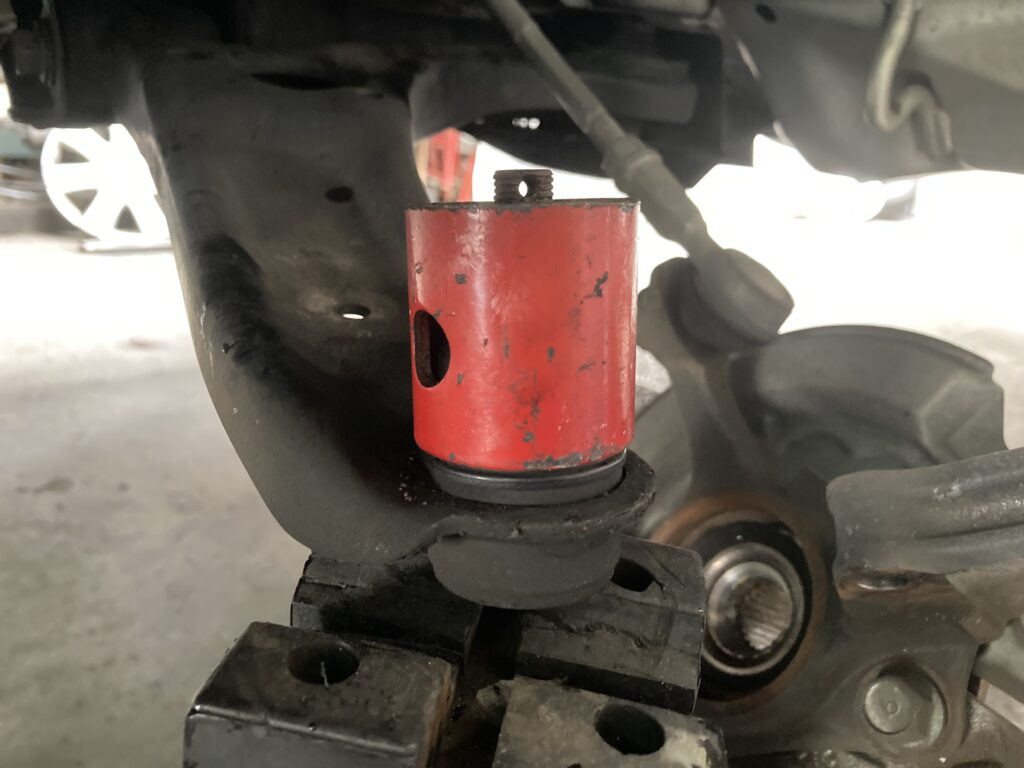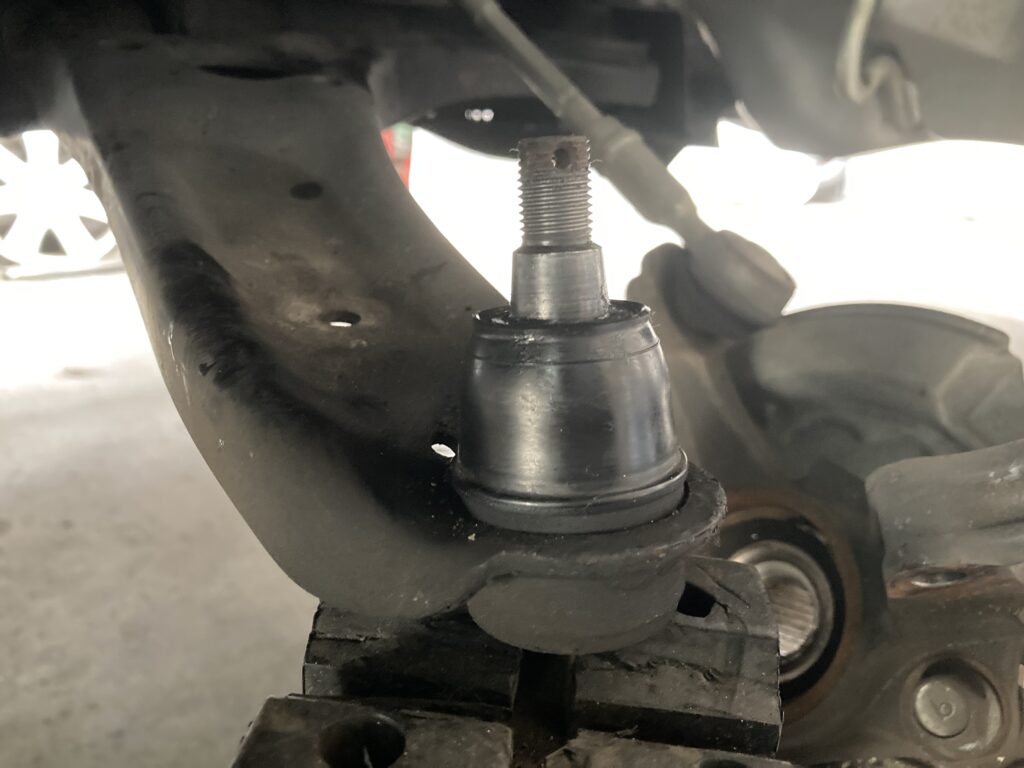In the mandatory vehicle inspection, there is an inspection item described as “cracks and damage to dust boots of ball joints in steering rods and arms.”
Ball joints have a structure similar to human joints and are essential components at the pivot points of steering and suspension systems.
Ball joints are mainly lubricated with grease and are covered with rubber dust boots to prevent sand, dust, and moisture from entering.
In aging vehicles, cracks and damage to these dust boots are common. If left damaged, the ball joint will rust and wear, causing looseness.
As wear and corrosion progress further, the ball joint may completely detach, which could lead to a serious accident depending on the driving speed.
This is the main reason why thorough inspection is required during mandatory vehicle inspections.
Reference article: “Suzuki Wagon R Lower Arm Ball Joint Detachment → Inoperable (E-CT51S)”
This time, we received a Daihatsu Mira for a 24-month inspection.
2009 model DBA-L275S KF-VE 4AT Mileage 132,000km
When inspecting the ball joint on the wheel side of the front suspension lower arm, large cracks were observed in the dust boot.
Fortunately, there was little grease contamination and no damage to the ball joint, so we addressed it by replacing the dust boot with a genuine part.
As a mechanic, you probably know that using aftermarket dust boots that only mimic the size is not acceptable. The lubrication at the surface contact area is poor, causing repeated twisting forces on the dust boot, leading to early rupture.
When installing the dust boot, we gently tap it in using a shock-less hammer with a suitable sized piece of scrap material as a buffer.
For Daihatsu vehicles with this suspension type, when the drive shaft is disconnected from the knuckle arm, tools can be easily applied to the ball joint’s tapered fit, making this the quickest and most reliable work method.
Always confirm the drive shaft lock nut’s specified torque in the repair manual. This is because sometimes a low-torque specification is required due to the hub bearing design.
In this case, it was 196Nm.
There are different preferences among mechanics for “staking” lock nuts, but I find rectangular marks to be neat, so I’ve made my own special punch for this purpose.
Despite being a relatively major job involving disassembly of the suspension, it’s unfortunate that there’s no visible change for the owner, but I hope they understand that regular maintenance inspections maintain safe operation through such modest accumulated work.





Leave a Reply